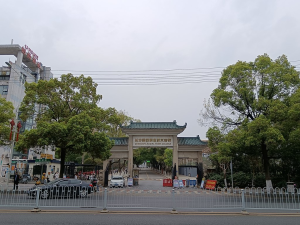Monitor conflict resolution process
This learning outcome covers: Importance of monitoring conflict resolution process, development of monitoring tools, implementation of monitoring tools and review of conflict resolution measure.
1. Monitoring tools
Monitoring entails the provision of feedback about how a project is progressing to the beneficiaries/ donors of the project. Monitoring entails purposeful and systematic observation of all project aspects to identify how resources are being utilized and how effective the project is in achieving the donor goals. Monitoring conflict entails understanding the context of the conflict, how the conflicting parties are interacting and how the intervention is working out in solving the conflict over time. It introduces the cause of conflict, the conflict actors and how the intervention is working out.
When to conduct monitoring:
Monitoring is continuous process that should be conducted throughout the conflict life cycle. It should be planned from the onset of the project so that all resources required are allocated early. Each stage should be completed with monitoring plans at the end of the conflict for a general overview of the conflict.
What should be monitored?
Activities: To ensure that all the activities that were planned in the beginning of the project are fulfilled and which ones are incomplete.
Outputs: The deliverables of the project from the activities tangible services and products.
Outcomes: The changes that have occurred from the output of the project and how they contribute to the desired impact of the project.
Impact: The degree to which the result of the project contributes to the long-term goals as well as the unexpected negative and positive effects of the project.
Types of monitoring:
Process monitoring: Looks at how the project activities are being implemented in the field.
Progress tracking: Entails checking whether the set targets of a project are met for every quarter the progress versus targets is determine by the trackers.
Progress validation: Entails reporting the progress of the man project activities by a field staff to the monitoring staff who validate the progress reported by collecting data in the field and measuring outcome with the set benchmarks.
Performance monitoring: This is where the outcome/benefits of the project are assessed depending on the baseline data which depicts the performance indicators.
Developing monitoring tools
There are different tools used to conduct conflict resolution monitoring.
A standard procedure should be used to develop these monitoring tools.
Step 1: Identify the conflict. This includes identifying the conflict actor‟s reasons for the conflict.
Step 2: Define indicators or objectives of the conflict resolution process. Indicators are important in tracking progress of the conflict resolution process.
Step 3: Define the methods of collecting information. Surveys or interviews could be conducted on the involved parties to collect information required for the process.
Step 4: Define the monitoring tool. A monitoring tool could be Gantt chart which will be divided into schedules within which a conflict will be managed and monitored.
Step 5: Conduct evaluation. Evaluate the success of the monitoring tool by assessing the success vis-à-vis the indicators stated.
What it should be monitored?
While monitoring the progress of conflict the following should be monitored to identify how the resolution is progressing.
Watch out for signs of tension among employees who were in conflict
Monitor quality of output by the employees especially the conflicting one.
Assess body language and verbal indicators that the conflict was resolved or not.
Characteristics of a monitoring tool
A monitoring tool should capture the information below:
The purpose of conducting monitoring
The activity covered by the tool
Methodology adoptive
Important finding from the field
Feedback from the field staff
The points of debriefing that were agreed upon
Responsibilities and deadline.
Steps of conflict resolution
i. Identify the cause: One should collect information the issue that led to the problem
ii. Focus beyond the conflict: The conflicting parties should ensure that their focus is not personal but they should focus on
iii. Deliver solutions
iv. Make a compromise on the solution
v. Agreements
